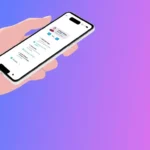
(Editor’s Note: Dan Munro writes for Forbes under the heading “HealthCare Compass”)

(Editor’s Note: Dan Munro writes for Forbes under the heading “HealthCare Compass”)
Rarely has a single phrase so captured – and enraptured – the entire healthcare industry. The last time I recall this fervor was in the late ’90′s with ”consumer directed healthcare.” Not surprisingly, both phrases focus on all of us collectively as patients – which, of course, isn’t accidental. In the ocean of healthcare currency and cost patients are often both the first and last wallet.
Over the course of the last two years, ”patient engagement” has mushroomed into a lead topic for speakers, conferences, trade shows, pitch decks, analyst reports and countless headlines (now including this one). But like much of our evolving experiment with healthcare’s reformation, it’s also cloaked in a nuanced, often contradictory (and now legally mandated) meaning. The trouble is, much like the phrase “consumer directed healthcare” before it, there’s sufficient ambiguity to make it malleable and customizable to fit multiple constituents – and agendas.
Just the phrase itself (in quotes) returns over 500,000 search results. One company simply stuck the word ”Systems” on the end of the phrase in hopes of riding the moniker itself to corporate victory. Healthcare definitely knows how to turn, capture and ultimately bludgeon a phrase into submission. The question then is – what does real patient engagement look like?
The idea of patient engagement as a “blockbuster drug” was originally coined by Leonard Kish last August (here).
Actually, it’s surprising that it has taken us this long to focus on patient engagement because the results we have thus far are nothing short of astounding. If patient engagement were a drug, it would be the blockbuster drug of the century and malpractice not to use it. Leonard Kish – Principal and Co-Founder of VivaPhi
He’s absolutely right, of course, and it should be malpractice not to use it – but how we define and then implement patient engagement will determine whether it’s truly a miracle drug – or just another variant of age old snake oil. That’s where the real work begins because it’s all too easy to capture broad attention with any popular phrase. The hope, of course, is that agreement and blind allegiance will quickly follow. After all, how could anyone actually oppose patient engagement?
The good news is – we now have some very real metrics around what constitutes real patient engagement and Leonard highlighted two impressive examples.
Kaiser Permanente HealthConnect™ / Collaborative Cardiac Care Case Study (here):
1) Prevented 135 deaths and 260 costly emergencies
2) Patients meeting cholesterol goals went from 26% to 73%
3) Patients screened for cholesterol went from 55% to 97%
4) “Clinical care teams reduced overall mortality by 76 percent and cardiac mortality by 73 percent”
VA Case Report: Care Coordination / Home Telehealth (here):
1) ~20% reduction in hospital admissions
2) ~25% reduction in bed days of care
3) 86% patient satisfaction
4) 20% – 57% reduction in treatment need for diabetes, COPD, heart failure, PTSD and depression
I’ll add another one (often referenced by Don Berwick), the Nuka System of Care (here) as sponsored and managed by the Southcentral Foundation in Anchorage, Alaska.
1) 40% Reduction in emergency room admissions
2) 50% Decrease in specialty care
3) 20% Decrease in primary care visits
4) 35% Decrease in hospital admissions
These are the metrics of success – at the core of patient engagement and healthcare delivery – at scale.
This last June, however, I saw reference to a decidedly different model of patient engagement. This one isn’t truly patient-centered. Instead, this one simply leverages the patient in a kind of “outsource” model of self administration, treatment, care or cost.
The heretofore unspoken truth to which I refer is that for some, patient engagement is not about getting patients to do what’s in their own best interest … but rather doing what’s in the self interest of policy makers, payers and perhaps providers. Patient engagement for those that think this way begins with policy makers, payers and administrators looking for ways of offloading tasks (of their choosing) to the patient (e.g., lowest pay grade), irrespective of the patient’s willingness, knowledge or ability to comply. Stephen Wilkins, MPH – Mind the Gap Blog (here)
Stephen doesn’t believe that most people operate this way, and neither do I, but as patients, it’s important to understand the distinction between these vastly different approaches. We will absolutely see both. As patients, we’re not only the final frontier in this long and winding experiment – we’re quickly becoming the final wallet. Whatever the Affordable Care Act does or doesn’t do, it most definitely didn’t remove the profit incentive around healthcare delivery.
True patient engagement has metrics of demonstrable success – at scale – over time. We now know what it looks like. Patient outsourcing (for lack of a better term) is often an unproven business model (at small scale) that winds up shifting some healthcare burden (either administrative function, cost or actual service delivery) directly to us as consumers. At its core, it’s just marketing spin to offload a healthcare burden or cost. One red flag is that these catchy phrases are often paired with ”disruptive” or “transformative” as another way to mask their lack of authenticity. When you have the real metrics – you don’t need bold qualifiers to trumpet success.
The more we become data driven around healthcare outcomes the easier it will be for everyone to make these important distinctions. In the meantime, patient engagement remains a fully loaded and often fully leveraged phrase. Look for the real metrics – and watch your wallet.







